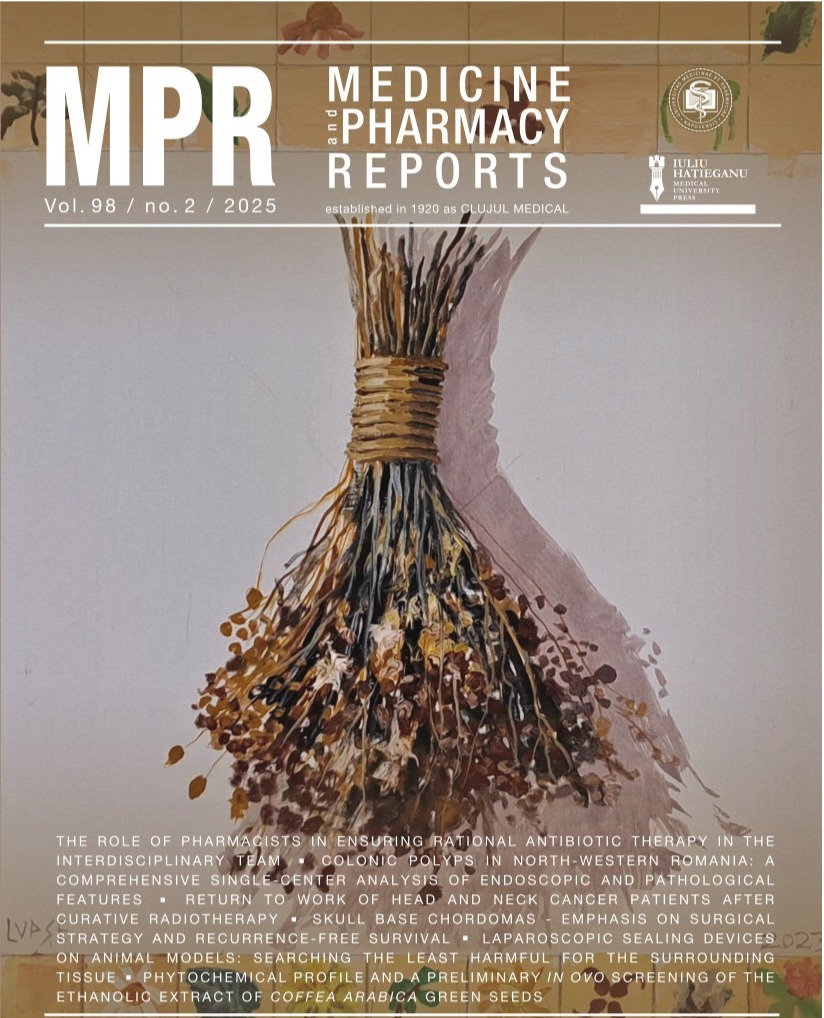Colonic polyps in North-Western Romania: a comprehensive single-center analysis of endoscopic and pathological features
DOI:
https://doi.org/10.15386/mpr-2742Keywords:
colonic polyps, risk factors, colorectal cancerAbstract
Background and aims. Most colorectal cancers (CRC) originate from precancerous adenomatous and serrated lesions. Accepted risk determinants for conventional adenomas and CRC include age, male gender and familial history. The aim of our study was to outline the characteristics of colorectal polyps in our center, as well as to uncover associations between them and certain clinical presentations.
Methods. We retrospectively collected the data available in a tertiary center of the patients that underwent colonoscopy for various indications (e.g.: rectorrhagia, abdominal pain, screening, anemia etc.) between the 1st of January 2022 and the 1st of August 2023. We analyzed the age, gender and symptoms of the patients. We analyzed the colorectal polyps detected. We classified the polyps based on location, size, shape, architecture and dysplasia grade. Statistical analysis was conducted to evaluate potential associations between their characteristics.
Results. 248 subjects were identified and included in the study. There were 584 polyps uncovered during the colonoscopies in 248 subjects. 498 polyps were excised and retrieved; 44.5% were right-sided and 55.5% were left-sided. Most of the polyps were < 1 cm (78.2%). There were significantly more adenomatous polyps (68.8%) than non-adenomatous (31.2%). Most of the polyps had a low grade of dysplasia (59.8%). There were significant associations between the polyp size and dysplasia grade, number and location on the transverse colon. Polyps under 1 cm were more likely to be tubular (p=0.008). The age of the patients >50 years was associated with a greater number of polyps (p=0.002). There was a moderate statistically significant association (p=0.0297) between the male gender and the number of adenomatous polyps.
Conclusions. Male gender, age greater than 50 years, history of colorectal polyps are risk factors for the development of colorectal polyps in the studied population. A history of more than 2 polyps and a size greater of 1 cm can be associated with higher rates of dysplasia.
Downloads
Published
How to Cite
Issue
Section
License
The authors are required to transfer the copyright of the published paper to the journal. This is done by agreeing to sign the Copyright Assignment Form. Whenever the case, authors are also required to send permissions to reproduce material (such as illustrations) from the copyright holder.

The papers published in the journal are licensed under a Creative Commons Attribution-NonCommercial-NoDerivatives 4.0 International License.

